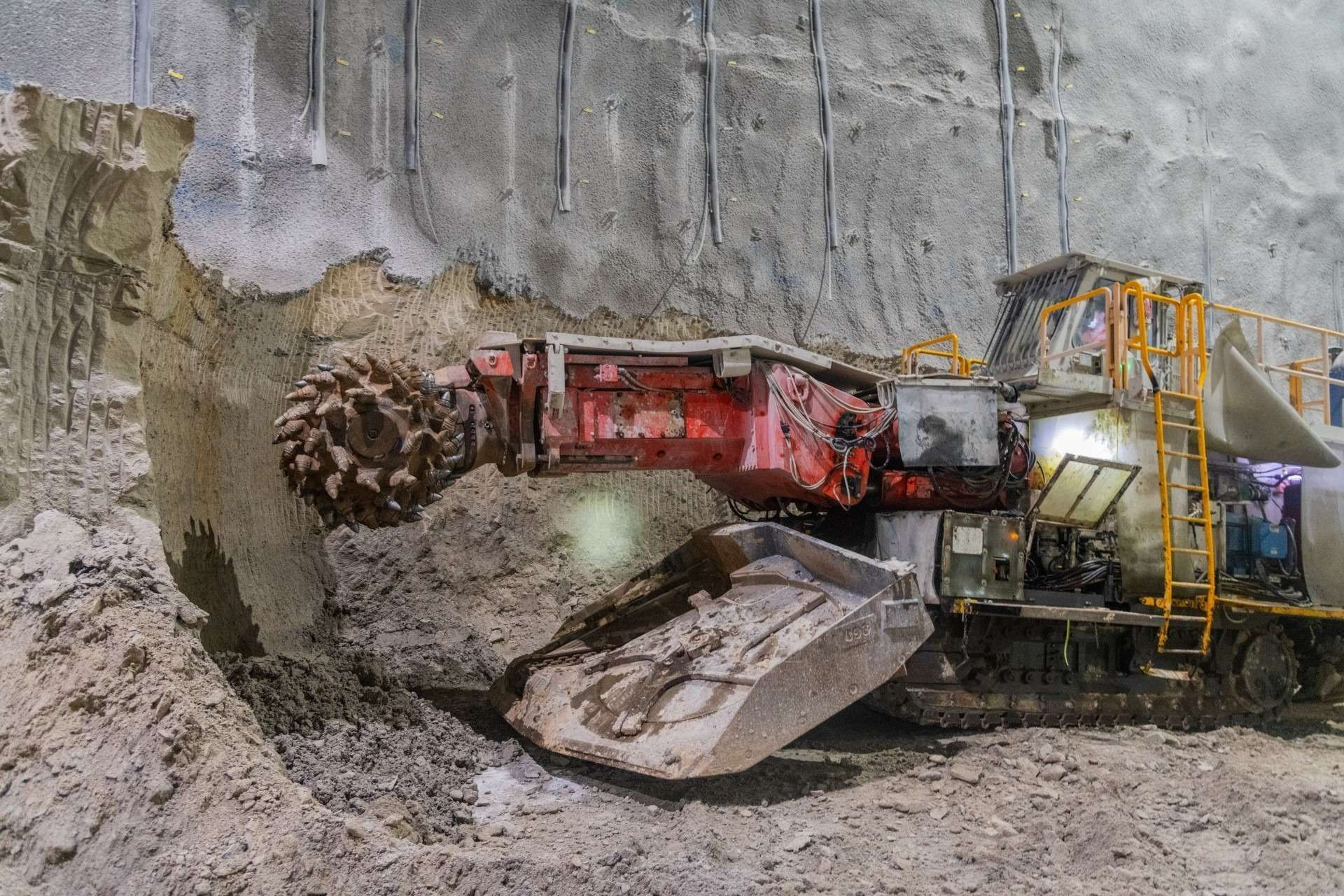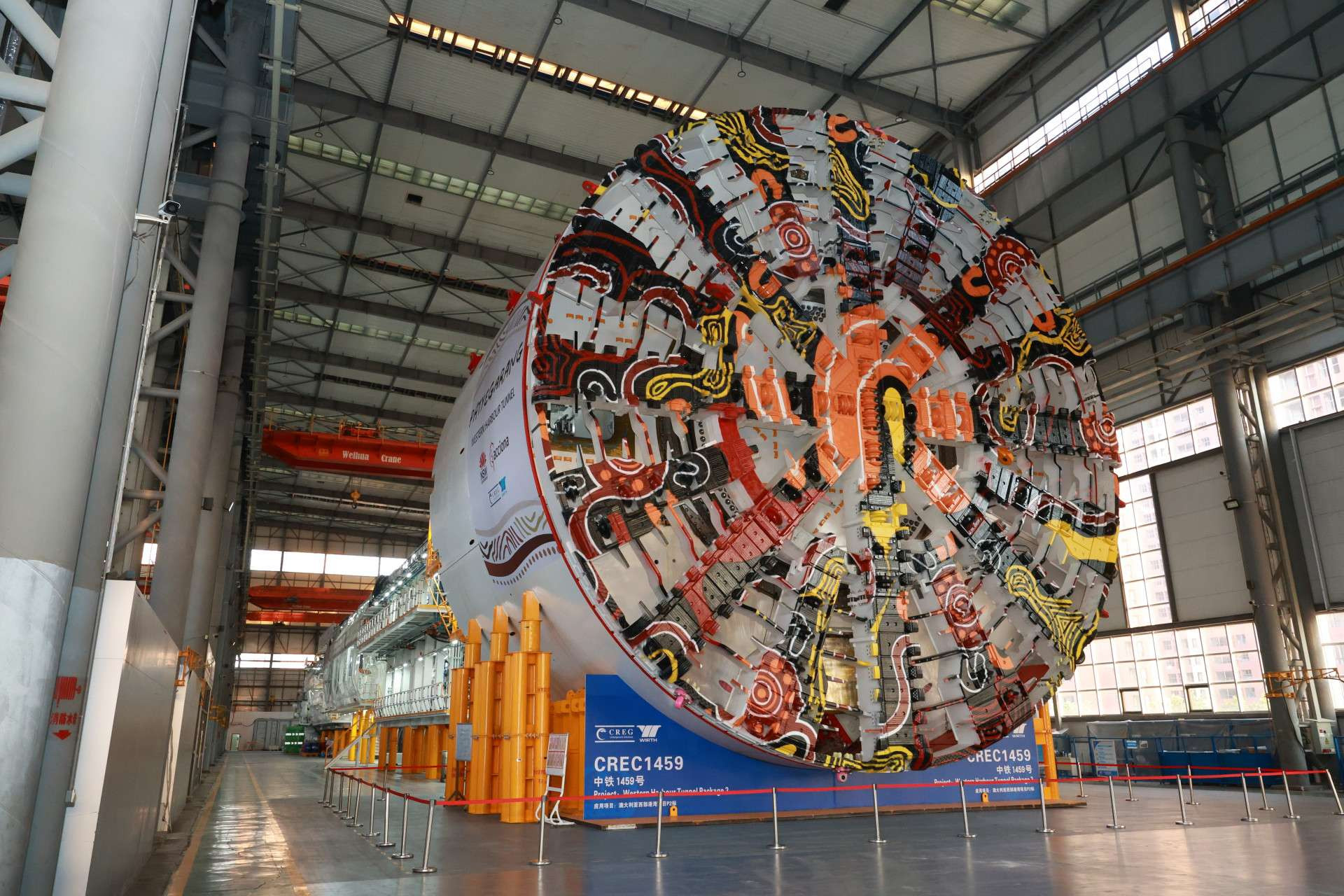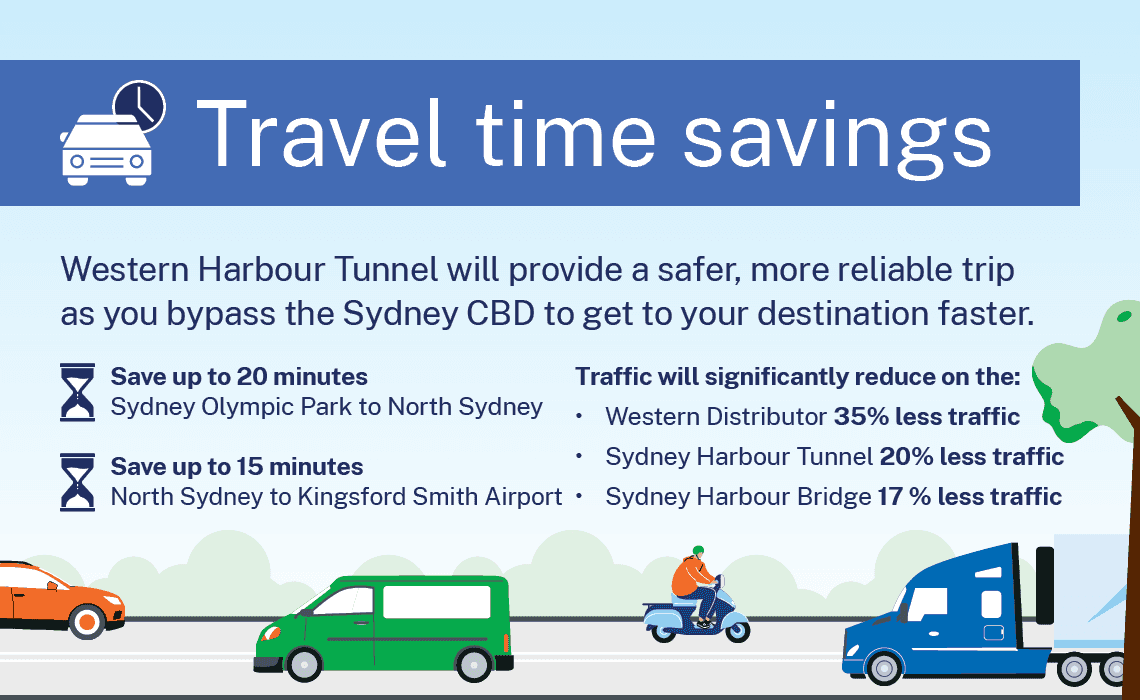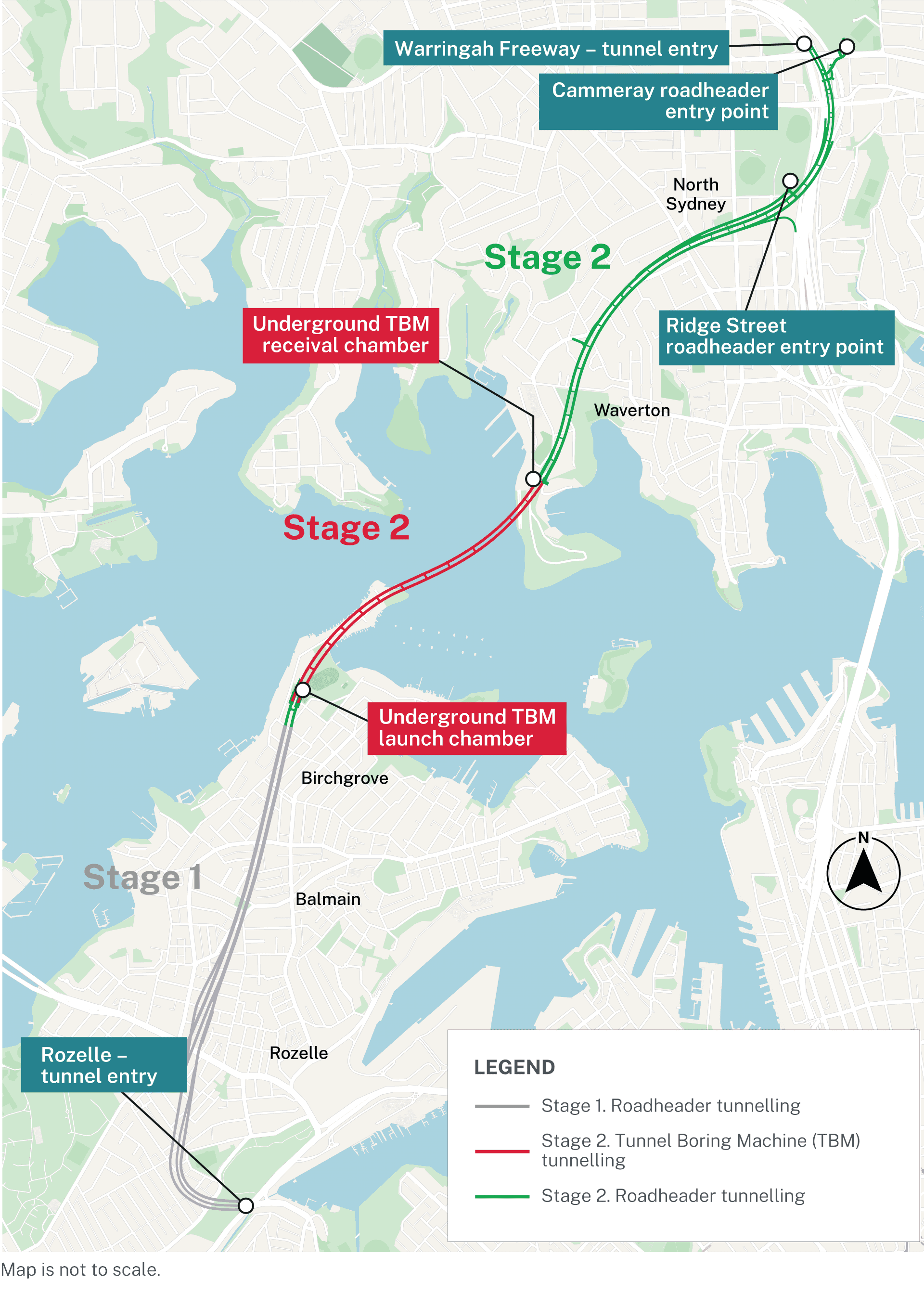
Tunnelling methodology
Two types of tunnelling equipment are being used to build Western Harbour Tunnel.
Roadheaders:
Roadheaders are specialised machines designed to excavate tunnels by cutting through hard rock. They have large rotating cutting heads fitted with metal picks designed to break and excavate rock. They also have bulldozer-style tracks that allow them to move across different ground surfaces as they excavate.
Roadheaders are being used to excavate the tunnels between Cammeray and Waverton, and between Rozelle and Birchgrove.

Tunnel boring machines (TBMs)
TBMs are specialised machines designed to excavate tunnels by cutting through hard rock, wet or dry soil, or sand. They are fitted with a large rotating cutterhead at the front to excavate the tunnel, while simultaneously installing precast concrete segments to form the tunnel lining, ensuring structural stability and safety. Hydraulic jacks positioned at the rear of the TBM shield push the entire assembly forward.
TBMs are being used from Birchgrove, north of Cove Street, and under Sydney Harbour to Waverton.
Our specialised TBMs will tunnel for about 1.5 kilometres from Birchgrove to Waverton including under the Sydney Harbour seabed, connecting the northern and southern ends of the project.
For more information about our tunnelling methodology view our fact sheet here

Project Modification
The use of tunnel boring machines (TBMs) for tunnelling was approved in the Modification to the project in January 2024.
This changed the methodology of tunnelling under Sydney Harbour from Immersed Tube Tunnel (IMT) to TBMs.
The modification significantly reduces construction impacts on the community and environment by:
eliminating the need for dredging in Sydney Harbour
reducing the overall number of construction support sites by removing the need for sites at Yurulbin Point, Berrys Bay, White Bay North and Victoria Road
removing the need for cofferdams in Sydney Harbour at Birchgrove and Balls Head
removing impacts to Birchgrove Ferry Wharf and ferry services
minimising disruption to ferries and boats on the harbour.
Project benefits
Sydney is growing fast. Our population is expected to rise from 5 million to 8 million over the next 40 years. By 2031, the city’s economy is also expected to double, with many new high-skilled jobs created along the Global Economic Corridor, stretching from Macquarie Park and Chatswood, through North Sydney and the CBD, to Sydney Airport.
Right now, some of Sydney’s busiest roads, including the Sydney Harbour Bridge, Warringah Freeway and Eastern Distributor, are among the most congested in the country.
To keep our city moving and support this growth, we need better transport connections. That means upgrading existing networks and building new ones. By moving more traffic underground, we can ease pressure on major roads, reduce congestion, and make our streets and communities more enjoyable places to live.

Improved amenity and open space:
As part of the Western Harbour Tunnel project, we’re returning land to the community through our Place Design and Landscape Plans (PDLPs).
These plans show how public spaces connected to the tunnel will look and function once construction is finished. They cover everything from buildings, roads and tunnels to parklands, footpaths, open spaces and native plants.
The PDLPs also explain the design process and highlight the area’s cultural and historical significance, including Western Harbour Tunnel’s connection to Cammeraygal and Wangal Country. They include sustainability features, heritage interpretation and opportunities for public art.
You can find more information on our PDLPs here.
